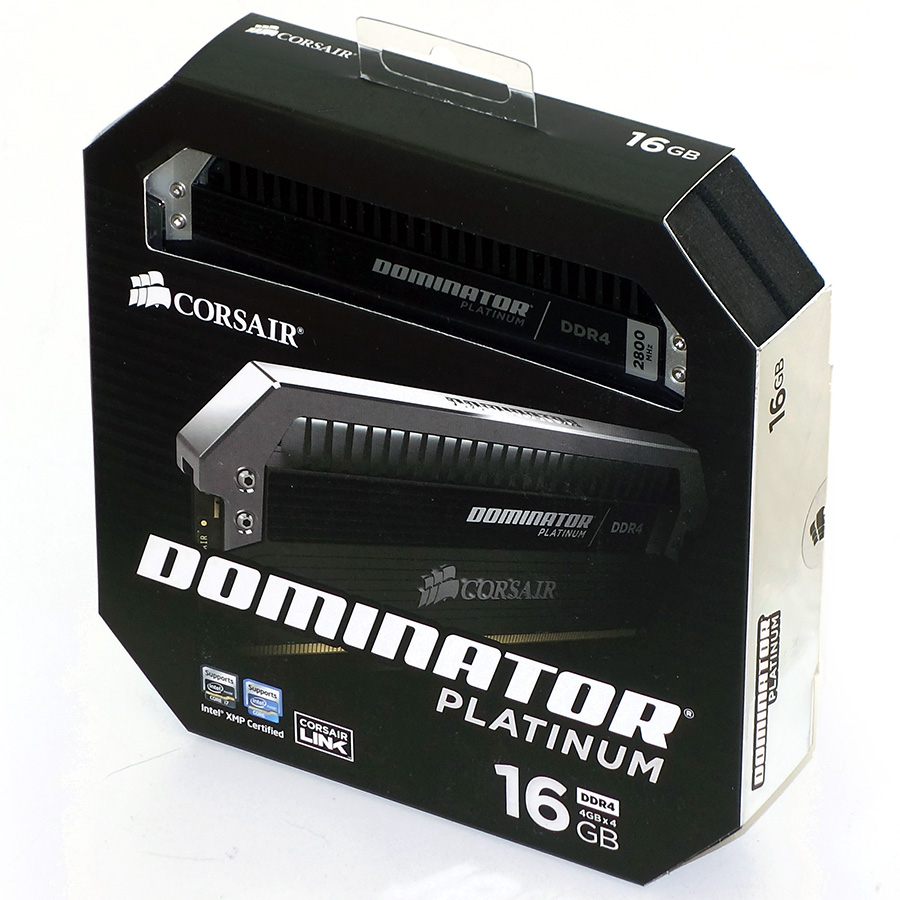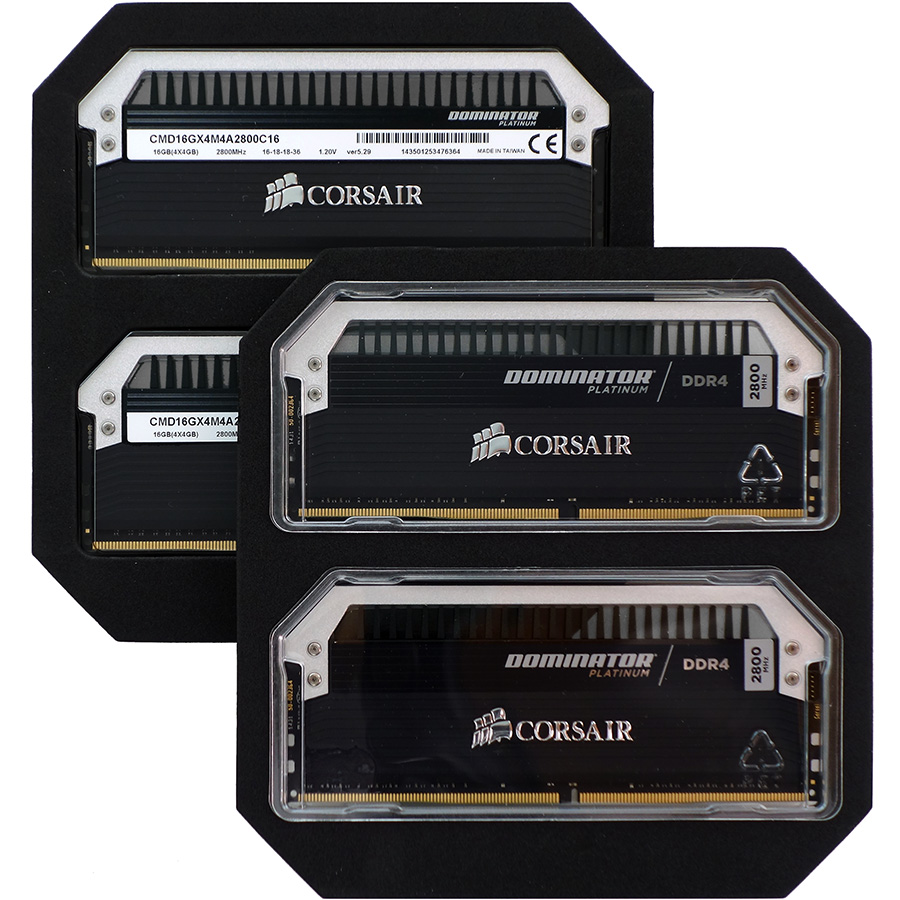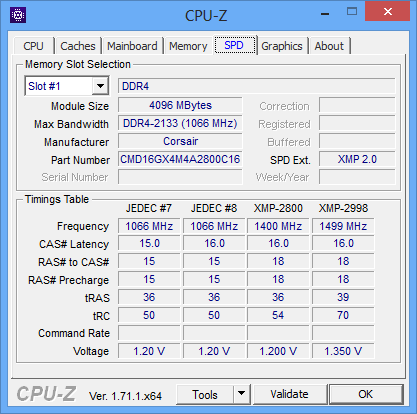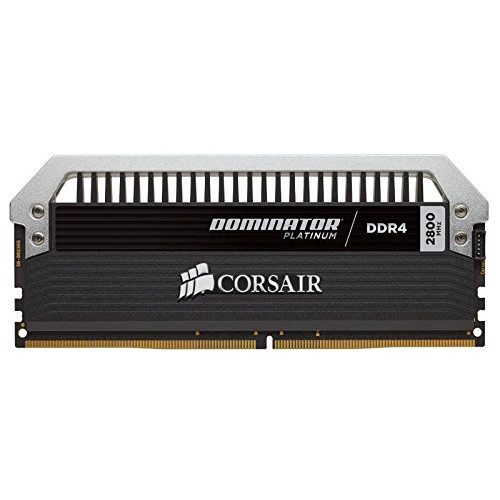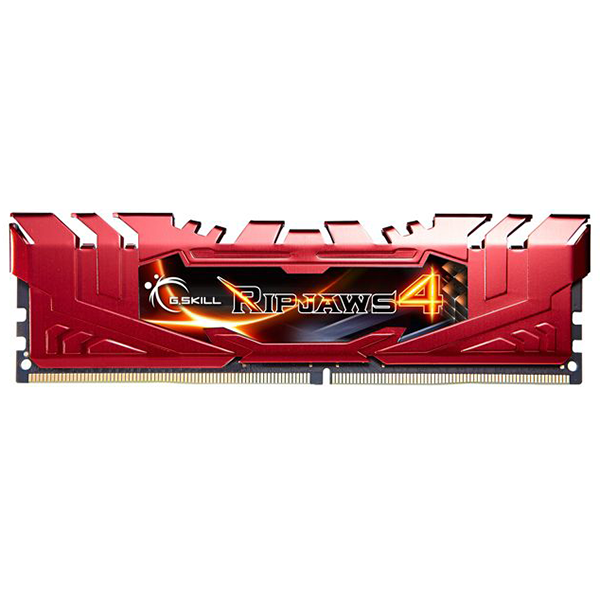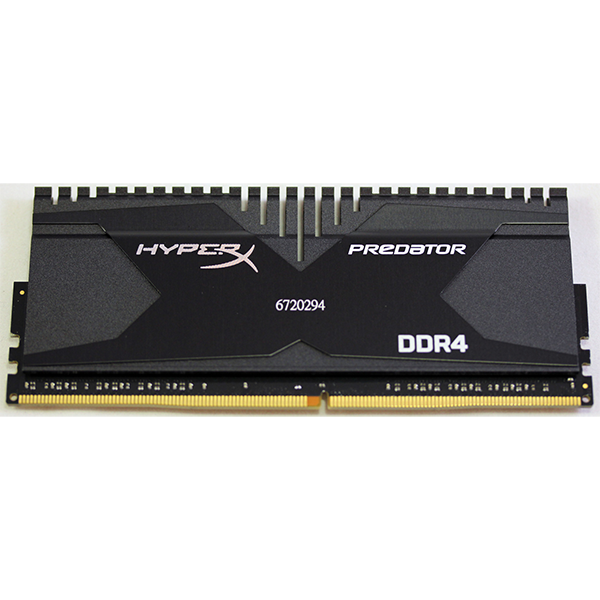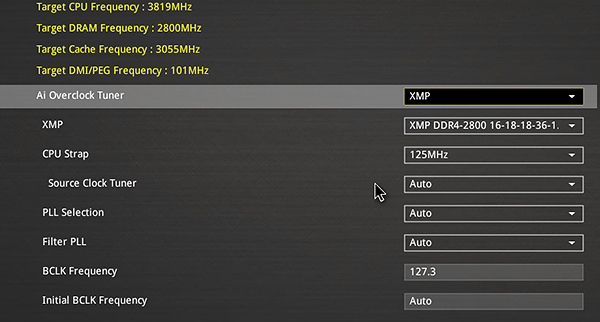Early Verdict
A great overclocker, Corsair’s CMD16GX4M4A2800C16 Dominator Platinum DDR4-2800 16GB Quad Channel DRAM kit appears overpriced only to buyers who don’t need its enhanced cooling mechanism or Corsair Link monitoring interface.
Pros
- +
Superior cooling mechanism, Corsair Link thermal/voltage monitoring interface, dual (2800 and 3000MT/s) XMP values
Cons
- -
Expensive
Why you can trust Tom's Hardware
The Hunt For Faster RAM Continues
I’m always on the lookout for extremely overclockable components, in part because they’re needed for testing the capabilities of other hardware that comes through our lab. No wonder, then, that I began my search for the best DDR4 before Intel's X99 platform even launched. When a company promised us the absolute fastest (in data rate) RAM available way back in October, I instantly agreed to use it. When competitors claimed they might be able to match or beat that product, I told them they should send theirs too. And when they circled back, saying they could probably match our best-in-class kit with a lower price, I was thrilled to put forth the value message. By early November, memory makers were all-in, and I was still writing about motherboards.
We saw the “similar but cheaper” argument produce strong value in our recent Kingston DDR4-3000 review. But that kit wasn’t able to exceed our previous data rate limit. Now it’s time to see if Corsair can do one better with a kit the company believed would out-overclock our original DDR3-3000 sample.
My biggest question was why Corsair would label one of its top quad-channel kits at a slower DDR4-2800 data rate? Could this be a way around customer complaints about motherboards that aren’t stable at 125MHz BCLK? That’s the base clock we need to reach DDR4-3000 on any platform that adheres to Intel’s DDR4-2666 limit, and most of our boards have failed to support a 125MHz BCLK in conjunction with a high 24x data rate multiplier.
Platforms aren’t Corsair’s business, so a workaround for motherboard-related memory complaints seems like an adequate rationale for the lower specified data rate. The company even equips the modules with a DDR4-3000 XMP. But underselling isn’t usually good for selling prices, and that means Corsair needs to rely on reviewers to spread its message.
Rated Specification
But Why 2800?
Calling this stuff DDR4-2800 presents a completely different problem, primarily because motherboards that adhere to Intel’s DDR4-2666 limit must overclock the CPU to use it. Getting there from DDR4-2666 requires a 5% CPU overclock. Bonus for Corsair if its RAM gets an artificial 5% benchmark lead from the overclocked CPU, right?
But that’s not how our sample motherboard sees things. It thinks a 127.3MHz x 22 data rate is the way to go, and that might also be a great performance option. But we test things apples-to-apples, and the fixed 4GHz CPU clock of our previous DDR4 reviews would put an end to that mischief. Fortunately, this same motherboard has a workaround: Asus supports Intel’s forbidden 28x data-rate multiplier.
Get Tom's Hardware's best news and in-depth reviews, straight to your inbox.
Current page: The Hunt For Faster RAM Continues
Next Page Overclocking, Tuning, Bandwidth And Latency-
Janithdalw I would choose the Kingston HyperX here because it offers better value for money. Corsair is out of their mind. Damn, it's more expensive than my GTX 970 and DDR3 is not really a bottleneck of performance. DDR3 RAMs are more than enough for the next 5 years. I don't see myself upgrading to DDR4 until 2016.Reply -
Pikker To be fair, more often than not this type of RAM will find it's way into systems that can easily exceed $1500+, at which point $50 isn't that big of a difference if it means a better-looking product, if you fancy window cases and such.Reply
Back when DDR3 was cheap, the price premium for Dominator RAM was much higher than it is now. -
SessouXFX If you're upset over the price, consider the fact that new memory types are always high starting out. DDR3 wasn't exactly dirt cheap so many moons ago. They normalize after a year or so, when the quantity makes things more affordable, just like SSDs used to be.Reply
But it was because of this issue alone, I personally made the decision NOT to build a X99. Not because I couldn't afford to do it, but the cost of the new form of memory would be way out of my comfort zone. You got to pay to play with the big boys. -
sleepy1234 These tests don't make much sense. Ram doesn't do much in a video game in terms of bandwidth unless you run out of Vram and need to make use of Virtual memory. Testing at 4k or using a 1GB graphics card might show the true benefits of the higher speeds.Reply -
Crashman Reply
The difference was bigger a few years ago when DDR3 was fairly new, and even bigger in DDR2 days, in similar programs. The closing gap is a good indicator of progress :)14884105 said:These tests don't make much sense. Ram doesn't do much in a video game in terms of bandwidth unless you run out of Vram and need to make use of Virtual memory. Testing at 4k or using a 1GB graphics card might show the true benefits of the higher speeds.
Too bad the reviews are getting published out-of-order...
-
Sabishii Hito The Vengeance LPX kit with the same speed/timings would be interesting to throw into the mix, as ostensibly they are the exact same as the Dominators for a lot less price. Assuming they're Ver5.29 (Hynix ICs) the overclocking capability is very high for them.Reply -
The3monitors 16gb testing is no longer a value. For this new generation i want 32, 64 or 128 memory kits.Reply -
Innocent_Bystander I don't think I'll be making the jump until after my next platform upgrade.Reply
My next one is a DDR3 based system built around a Core i5 and a GTX 970 or Radeon 380... once that system runs out of steam (5-8 years with more regular graphics upgrades), I'll br jumping on the DDR4 bandwagon... it's also enough time for these modules to go from $450 to $80
